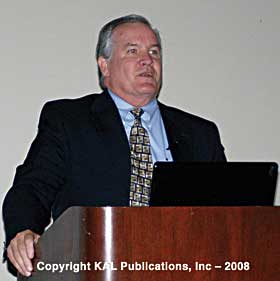There are 1-3 billion tons of biomass in the United States that could be available for the production of fuel. I was talking last week with Weyerhaeuser and they think this number is low. That's 3 1/2 billion barrels of oil equivalent.

Recent studies say 75% of the problems with food versus fuel is associated with ethanol from corn. We think it's significantly less than that based on our own analysis.
We're working on the conversion of cellulosic cells into biodiesel. This includes the corn stalk, all but the kernels, the waste products of sugarcane, woods, and grasses. We're talking about agricultural residues.
The real issue isn't the synthesis of transportation fuels. It is the production of the intermediates, creating sugars or syn gas which can be used to synthesize longer chain molecules and make transportation fuels.
96% of ethanol corn is non-irrigated corn. But in the western part of the corn belt, a tremendous amount of water is being used to irrigate corn in areas where rainfall is not as substantial.
The Energy Independence & Security Act — EISA — mandates 36 billion gallons of renewable fuel by 2022 and 21 billion gallons in advanced biofuels. That means not corn-based ethanol. So there is a limit to how much of that requirement we can meet with corn-based ethanol.
Trade magazine publishing featuring a “hometown paper” approach to industry news, events, and the people who make it all happen.